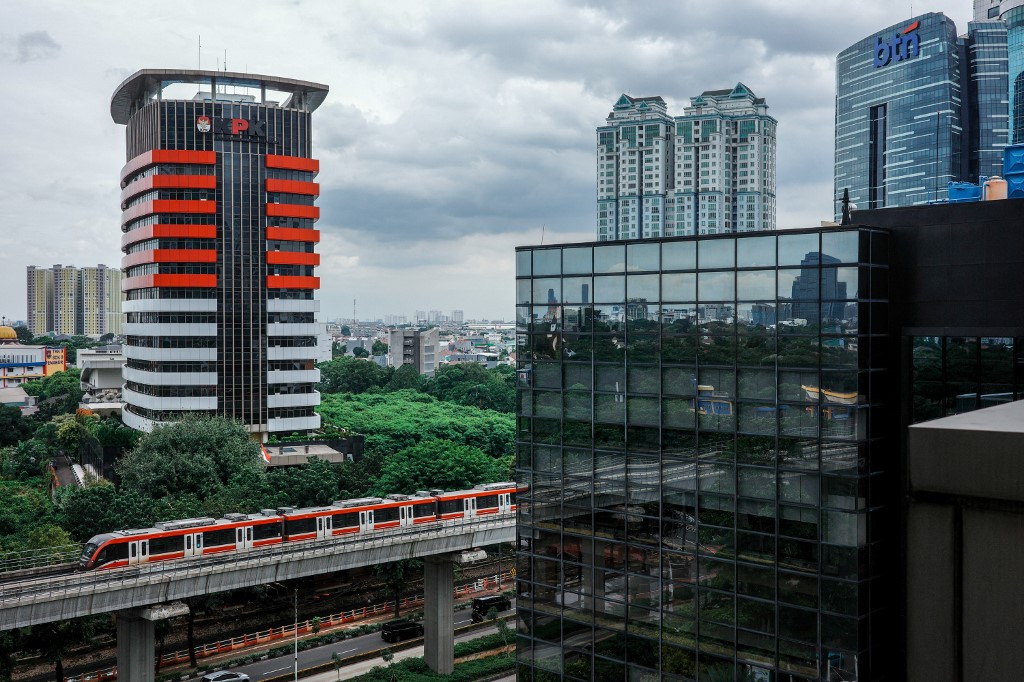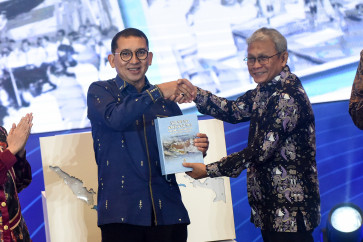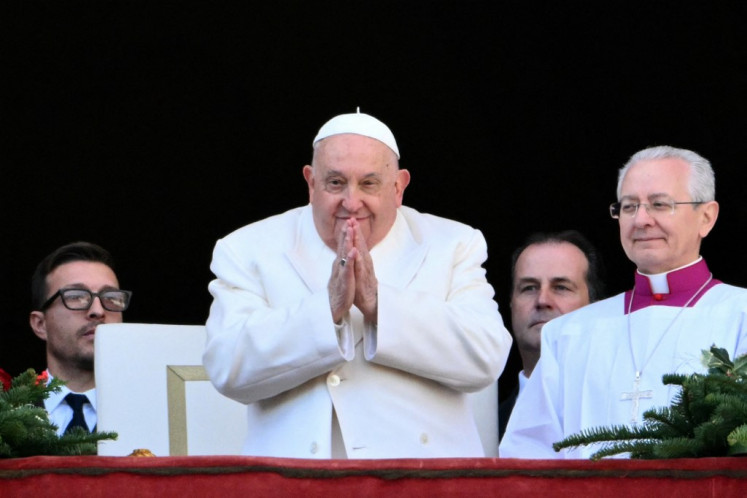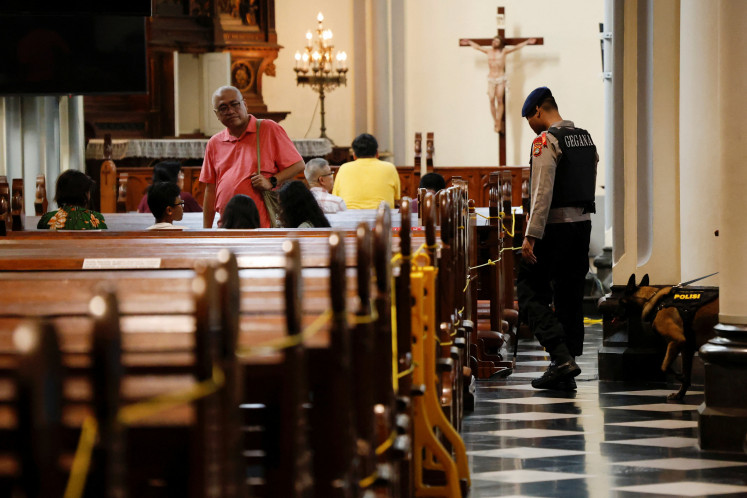Popular Reads
Top Results
Can't find what you're looking for?
View all search resultsPopular Reads
Top Results
Can't find what you're looking for?
View all search resultsIndonesia at its richest: Strengthening governance for sustainable growth
Danantara holds promise, but unless Indonesia addresses structural weaknesses, the fund risks becoming another state-controlled financial instrument subject to political cycles.
Change text size
Gift Premium Articles
to Anyone
A
recent conversation with emeritus professor Djoko Suharto from ITB’s mechanical engineering department about Indonesia’s budget ratio, which is hovering at around 17 percent of gross domestic product (GDP), left me deep in thought. Compared to Malaysia (23–25 percent), Thailand (20–22 percent), the Philippines (22–24 percent) and Vietnam (28–30 percent), this figure is relatively small, limiting Indonesia’s ability to finance development programs, education, healthcare and infrastructure.
Even the free nutritious meal program, set to receive Rp 171 trillion (US$10.37 billion) in the 2025 budget, faces constraints under a fiscal policy focused on deficit control and a narrow tax base. While the government seeks to maintain stability, these limitations restrict long-term economic expansion.
Indonesia’s tax revenue-to-GDP ratio, at just 10-12 percent, remains among the lowest in the region, further limiting fiscal flexibility. Meanwhile, infrastructure spending is at just 2.8 percent of GDP, far below the 5-7 percent needed to accelerate industrialization and attract long-term investment.
The government has responded with tax reforms, industrial incentives, sovereign wealth management and public-private partnerships. Danantara, Indonesia’s newly established sovereign wealth fund, is one of the most significant fiscal innovations, designed to mobilize capital, optimize state assets and attract long-term investments.
Globally, sovereign wealth funds (SWFs) have transformed economies; Norway’s Government Pension Fund Global, valued at US$1.4 trillion, ensures stability through global investments, while Singapore’s Temasek, with $287 billion in assets, accelerates industrial and technological growth. Saudi Arabia’s Public Investment Fund (PIF), valued at over $925 billion, has aggressively shifted its investment portfolio beyond oil, diversifying into technology, tourism and green energy. Malaysia’s Khazanah Nasional ($22.5 billion) has taken a hybrid approach, investing in regional markets like ASEAN and China while maintaining a presence in developed economies like the United States and Europe.
Timor-Leste’s Petroleum Fund ($18.25 billion) highlights both the potential and risks of sovereign wealth management, as despite its strong funding from oil revenues, it faces challenges in long-term sustainability due to declining fossil fuel production. Egypt’s sovereign wealth fund ($12 billion) is another case study, designed to transfer state-owned enterprises into more productive assets, though its effectiveness still depends on governance reforms.
The success of these funds is not just about the amount of capital managed, but about governance structures, transparency and long-term vision guiding their investments. Countries with strong institutions, such as Norway and Singapore, have leveraged SWFs to build future resilience, while others with weaker oversight structures have struggled with political interference, misallocation of resources and failure to drive economic transformation.
Danantara holds promise, but unless Indonesia addresses structural weaknesses, the fund risks becoming another state-controlled financial instrument subject to political cycles rather than a true long-term economic growth engine.
Ensuring meritocracy, transparency and independence in managing the fund is critical to its success. Stronger regulatory oversight and public accountability mechanisms will be crucial in safeguarding the integrity and effectiveness of Danantara. Without these, the fund may fall into the same traps as other underperforming SWFs in countries with weak institutional frameworks.
Yet, despite these efforts, Indonesia continues to face deeply entrenched structural challenges. No fiscal tool, no matter how well designed, can overcome weak institutions, systemic corruption and a bureaucratic system that prioritizes control over progress.
Economic growth is fundamentally shaped by how institutions function and how incentives are structured. No policy measure can succeed in a system where political connections override meritocracy, economic policies favor entrenched business elites and bureaucracy stifles rather than facilitates innovation.
Indonesia ranks 96th in Transparency International’s Corruption Perceptions Index, reflecting how deeply corruption distorts decision-making. The deeper issue is cultural, embedded in governance and decision-making at all levels.
Meritocracy has eroded, prioritizing loyalty over competence and weakening innovation. Corruption distorts resource allocation, sustaining elite structures instead of fostering competition. Political-business entanglement creates an environment where large conglomerates benefit from regulatory barriers while smaller firms struggle to scale.
Public-private partnerships often lack transparency, and bureaucracy imposes excessive compliance burdens, slowing progress. These systemic failures are not just inefficiencies, rather, they are deeply ingrained behaviors that shape economic outcomes.
The World Bank’s Ease of Doing Business Index ranked Indonesia 73rd, highlighting persistent regulatory challenges that deter investment. The lack of competitive innovation is evident in Indonesia’s Global Innovation Index ranking, where it sits at 61st in 2023, lagging behind regional peers.
While challenges remain, Indonesia is experiencing unprecedented economic progress. As Ricardo Hausmann noted during a recent discussion at the Harvard Club of Indonesia, “When was the time in which Indonesia was richest? The answer to that question is ‘now’.” He emphasized that despite ongoing struggles, Indonesia’s economy has been growing steadily at 5 percent annually, marking a period of historical prosperity.
Reflecting on Venezuela’s decline, Hausmann warned that societies often fail to recognize progress when they are in the midst of it. His advice was clear: Count your blessings, acknowledge what is working and channel that optimism into ambition for the future. Indonesia has the foundation for significant growth, yet the challenge lies in whether it can leverage its strengths while overcoming systemic constraints.
The path forward is not easy, but it is necessary. If Indonesia does not commit to institutional and cultural reform today, the opportunities of its richest era may be squandered. Indonesia has perhaps the best economic team since the Berkeley Team in the New Order era.
However, real reform is not measured by policies alone, but by a society’s willingness to redefine success, accountability and long-term vision. History shows that meaningful cultural shifts require 50-75 years, or two to three generations, to fully materialize. Sustainable development requires more than technocratic solutions; it demands a shift in national character, where innovation, transparency and meritocracy become foundational principles. Without this cultural transformation, even the best-designed policies will remain unfulfilled aspirations.
Indonesia must act now to begin this transformation. Policymakers, businesses and civil society must work together to dismantle entrenched barriers and reshape the economic landscape. The transition will not be easy, nor will it be immediate, but Indonesia must take bold steps to align governance with its ambitions.
A nation’s true strength lies not just in its economic policies, but in its ability to evolve, adapt and create a system that nurtures progress for generations to come. The future depends on whether Indonesia is willing to make this shift today.
***
The writer is a Harvard Business School alumnus and affiliated alumnus of MIT Sloan School of Management.










